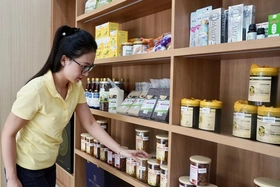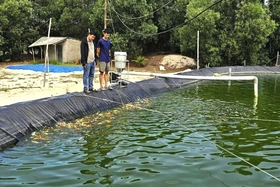b+G6tuG7meG7kXhCcEpKZ8O04buK4bqz4bqyS0Lhu7PDtMOz4bqvTHBE4bqw4buR4bqzxKjhurLhu5Hhu4rEqOG6ssSQxKjhurJL4bqyeuG7s0rhu5FKTEpLcOG6skRwd0Lhu7Phu5Hhuq7hurJK4bq24buzxKjhurLhu7NK4buR4bqyRHlMSkvEqMag4buReeG7s+G7mOG7s0LEkOG7ikPhu7NES28v4bq24buZw7Nv4buK4buReEJwSkpnw7Thu4o74buzcHnDtMOzV+G7s0Thu7Phuq7hurJL4bqyROG6sOG7keG6rsSoxJBD4buR4buz4buWS+G7s0RK4bqy4buY4buz4buR4bqu4bqySuG6tuG6skThurDhu5HhurDEqMSQTER5Smrhu5Hhuq9McEThurDhu5HhurPEqOG6suG7keG6tnBK4buR4buKxKjhurLEkMSo4bqyS+G6snrhu7N54buRS+G6tuG7s+G7kXB54buYcER44buzQ+G7s0RL4buRxJDhuq7hu5HhurJLSuG7keG6ruG6skrhurbhu7PEqOG6suG7s0rhu5HhurJEeUxKS8SoxqDhu5HhurJE4buRcOG7kXjEkERL4buzQ+G7isSQxKhwxKjGoOG7kXBEeeG7kUpMSktw4bqyRHB3QuG7s+G7kUNwREThu7PEqGtvL+G7isOzb+G7iuG7kXhCcEpKZ8O04buKV8SQecagw7TDs2/hurJD4bqw4buReEJwSkpnw7ThurJY4buzREvhu7PEqMO04buRSsSoeGfDtOG6tktL4buKSuG7iS8veGt3cMSQ4buITHBE4bqwS8So4bqya+G7mEQveeG7s0rhuqpLxJDhu4ovROG7s+G7lEov4buV4buXxqHhu58v4buZ4buZxqF54buV4buZ4buh4buZ4bud4buV4bujS8ah4buX4buT4buXQuG7ny3hurbEkOG7s+G7k+G7m2vhu5Thu7N34buKw7Thu5FwQktnw7Thuq9McEThurDhu5HhurPEqOG6suG7keG7isSo4bqyxJDEqOG6skvhurJ64buzSuG7kUpMSktw4bqyRHB3QuG7s+G7keG6ruG6skrhurbhu7PEqOG6suG7s0rhu5HhurJEeUxKS8SoxqDhu5F54buz4buY4buzQsSQ4buKQ+G7s0RLw7Thu5Evw7NvL+G7isOzb+G7iuG7kXhCcEpKZ8O04buKWHDhu4pL4bqyxJBEw7TDs33EkHhwQuG7kXBMS+G6tsSQxKjhurJL4bqy4buzSuG7keG6skRK4buK4buzeEvhu5FL4bq24buz4buRxKjhu7NExJDhu5hwS+G6ssSQROG7kcSQ4bqu4buR4bqu4bqySuG6tuG6skThurDhu5F3xJBwS0rhu5FMSuG6skThurDhu5HEg+G6teG7kUNwS+G7s8So4bqycEJKa+G7kcSD4bq2xJBLxJDhu4nhu5HhurNrWGt9by/hu4rDs2/hu4rhu5F4QnBKSmfDtOG7ilfEkHnGoMO0w7PhurPhurbhu7Phu5F4xJBESuG6skpL4buzREvhu5Hhu4rEqMSQeUx4S+G6ssSQROG7kcSQ4bqu4buRSuG7s3Dhuq7EkMSQeeG7kUrhu7PEqOG7mOG7s0rhu5FwSuG7kXDhu5F4xKhMeOG6snBC4buRSkzhu4rhu4pCxqDhu5Hhuq7EkMSo4buR4buKxKjEkHjhu7NKSuG6skThurDhu5Hhuq5weOG6skLhurJL4bqy4buzSuG7kXBEeeG7kXDhu5FCTHjEqHBL4bqy4buY4buz4buR4buz4buW4buKxJDEqEvhu5F4xJBDQ8SQeeG6skvGoGvhu5FQeXnhurJL4bqyxJBEcEJCxqBq4buRS+G6tuG6skrhu5HhurJE4bqyS+G6snBL4bqy4buY4buz4buR4bqw4buzROG7s8SocEvhu7NK4buR4buzQ+G7ikLEkMagQ+G7s0RL4buRxJDhu4rhu4rEkMSoS0xE4bqyS+G6suG7s0rhu5Hhuq7EkMSo4buRxJDhu5jhu7PEqOG7keG7meG7nWrhu5Phu5Phu5Phu5HhurJEeeG6suG7mOG6snlMcEJK4buRcHjEqMSQSkrhu5Hhu5nhu53hu5F4xJBwSktwQuG7kXjEkENDTEThu7NK4buRcER54buRS8SQ4buURErhu5Hhu5ThurJL4bq24bqyROG7kUvhurbhu7Phu5Hhu4rEqMSQ4buY4bqyRHjhu7Nrby/hu4rDs2/hu4rhu5F4QnBKSmfDtOG7ilfEkHnGoMO0w7NQSuG7kcSQ4bqu4buR4buzcMSoQsag4buR4buV4buT4buV4buXauG7kUvhurbhu7Phu5Hhu4rEqMSQ4buY4bqyRHjhu7Phu5F3xJBwSktK4buRcOG7kUvEkEtwQuG7kcSQ4bqu4buR4buVauG7meG7leG7n+G7keG6ruG6skrhurbhurJE4bqw4buR4buY4buzSkrhu7NCSuG7keG7lOG6skvhurbhu5Fw4buReMSQQ3fhurJE4buzeeG7kXhw4buKcHjhurJLxqDhu5HEkOG6ruG7keG7meG7l+G7o2rhu5Xhu53hu5nhu5FYw6lr4buRUEPEkEThurDhu5FL4bq24buzQ2rhu5Hhu5vhu5Xhu53hu5Hhu5jhu7NKSuG7s0JK4buR4bq2cOG7mOG7s+G7kXDhu5FC4buzROG6sEvhurbhu5HEkOG6ruG7keG7neG7kUPhu7NL4buzxKhK4buRxJDEqOG7kUPEkMSo4buzauG7keG6skR4Qkx54bqyROG6sOG7keG7leG7l+G7keG7s+G7lnjhu7Phu7N54bqyROG6sOG7keG7lcah4buRQ+G7s0vhu7PEqErhu5FwRHnhu5Hhu5nhu6Phu5nhu5HEqHBE4bqw4bqyROG6sOG7keG6rsSoxJBD4buR4buZ4bub4buRS8SQ4buR4buVxqHhu5FD4buzS+G7s8SoSmvhu5E64bqyxJDhu5F94bqyROG6tuG7kVnhurJKS8So4bqyeEvhu5FKS3BEeUrhu5HEkExL4buRcErhu5FL4bq24buz4buRQsSQeHBC4bqyS8ag4buR4buU4bqyS+G6tuG7kUvhurbhu7Phu5FCcMSo4bqw4buzSkvhu5HEkOG6ruG6rkrhurbEkMSo4buz4buR4bqu4bqySuG6tuG6skThurDhu5Hhuq5C4buz4buzS+G7keG6skThu5FL4bq24buz4buR4buKxKjEkOG7mOG6skR44buza28v4buKw7Nv4buK4buReEJwSkpnw7Thu4pXxJB5xqDDtMOzWeG7s0rhu4rhurJL4buz4buRS+G6tuG6skpq4buRS+G6tuG7s8So4buz4buR4bqySuG7kXDhu5F4TMSoxKjhu7NES+G7kUJweOG6quG7kcSQ4bqu4buRSsagRHjhurbEqMSQROG6snrhu7N54buRcER54buReeG7s0vhu7PEqOG6ssSQxKhwS+G6skThurDhu5HhurJE4bquxKhwSkvEqEx4S0zEqOG7s+G7keG6skThu5jhu7NKS0Phu7NES+G7keG6rsSQxKjhu5FK4buzcOG6rsSQxJB54buR4buz4buW4buKQsSQ4bqyS3BL4bqyxJBEa+G7kT/hurJK4bq24bqyROG6sOG7kULEkOG6sOG6skpL4bqyeErhu5FK4buzxKjhu5jhurJ44buz4buR4buY4buzSkrhu7NCSuG7kcSo4buzQ3DhurJE4buRTER54buzxKh54buz4buY4buzQsSQ4buK4buzeWrhu5FwRHnhu5HhurJESkzhuq7huq7hurJ44bqy4buzREvhu5FwS0vhu7NES+G6ssSQROG7keG6rsSoxJBD4buR4bqu4bqySuG6tuG7s8SoQ+G7s0Thu5FLxJDhu5Hhu4rEqMSQeUx4S+G7keG7isSo4buzSuG7s8So4buYcEvhurLEkEThu5HEqOG7s0pMQktK4buR4bqyROG7kULEkEpK4buzSmrhu5F4xJBD4buKxKjEkEPhurJK4buzeeG7keG7iExwQuG6skvGoGrhu5F54bqyQ+G6skThurJK4bq24buzeeG7keG7isSoxJB5THhL4buR4buYcEJM4buzauG7kcSo4buzeUx44buzeeG7keG7isSoxJDhuq7hurJLSmrhu5FwRHnhu5HhurJEeMSo4buzcErhu7N54buReMSQSktK4buReUzhu7Phu5FLxJDhu5F54buz4bqwxKhweeG7s3nhu5FKS8SQxKhw4bqw4buz4buR4bqucHjhurJC4bqyS+G6suG7s0rhu5FwRHnhu5HhurJEcHnhu7Phu4hMcEvhu7Phu5F4xJBCeeG7keG7isSo4buzSuG7s8So4buYcEvhurLEkERrby/hu4rDs2/hu4rhu5F4QnBKSmfDtOG7ilfEkHnGoMO0w7PhurPEkOG7kXB5ecSo4buzSkrhu5FL4bq24buzSuG7s+G7keG6skpKTOG7s0pq4buRS+G6tuG7s+G7keG6r0xwROG6sOG7keG6s8So4bqy4buRUOG6sMSo4bqyeExCS0zEqHBC4buR4buy4buWS+G7s0RK4bqyxJBE4buRWOG7s0RL4buzxKhq4buR4bqyROG7kXjEkEJCcHfEkMSocEvhurLEkEThu5Hhu5ThurJL4bq24buRS+G6tuG7s+G7keG6s+G6tkxw4buR4bqz4bq24bqy4buzROG7kTtM4buz4buRUOG6sMSo4bqyeExCS0zEqHBC4buR4buy4buWS+G7s0RK4bqyxJBE4buRWOG7s0RL4buzxKhq4buR4bqySuG7keG6skPhu4pC4buzQ+G7s0RL4bqyROG6sOG7kUvhurbhu7Phu5HigJxQ4buK4buKQuG6snhwS+G6ssSQROG7kcSQ4bqu4buRWMSDP+G7kW1YxJBD4buKxJBK4bqyS+G7s+G7kcSDxJBCxqBMxKjhu7NL4bq2cEThu7Phu5E/xJBwQ27hu5FL4buzeOG6tkTEkELEkOG6sMag4buR4bqyROG7keG7isSo4buzSuG7s8So4buY4bqyROG6sOG7keG7isSoxJB5THhLSuG7kcSQROG7kcSQ4bqu4bquSuG6tsSQxKjhu7Phu5Hhuq7hurJK4bq24bqyROG6sOG7keG7mOG7s0pK4buzQkrigJ3hu5Hhu4rEqMSQ4bqo4buzeEtq4buR4buU4bqyS+G6tuG7kUvhurbhu7Phu5FdcEvhurLEkERwQuG7kVDhurDEqOG6snhMQktMxKhwQuG7keG7suG7lkvhu7NESuG6ssSQROG7kVjhu7NES+G7s8So4oCZSuG7kUpM4buK4buKxJDEqEtr4buR4bqz4bq24buz4buR4bqyROG6skvhurJwS+G6suG7mOG7s+G7keG7lHBK4buRQnBMRHjhurbhu7N54buR4bqyROG7keG7leG7k+G7leG7meG7kXBEeeG7keG7leG7k+G7leG7leG7keG6skThu5FYTHDhu5HDqeG6suG7s0vhu5HhurPEkOG7lEThu5FwRHnhu5E64bqyxJDhu5HDqeG6suG7s0vhu5FYxJBDQ0xE4buzauG7kTrhurLEkOG7kX3hurJE4bq24buRWeG6skpLxKjhurJ4S2tvL+G7isOzb+G7iuG7kXhCcEpKZ8O04buKV8SQecagw7TDsyxE4buR4buV4buT4buV4buXauG7kUvhurbhu7Phu5Hhuq9McEThurDhu5HhurPEqOG6suG7kVDhurDEqOG6snhMQktMxKhwQuG7keG7suG7lkvhu7NESuG6ssSQROG7kVjhu7NES+G7s8So4buReMSQREvhurJETOG7s0rhu5FL4bq24buz4buR4buKxKjEkOG6qOG7s3hL4buR4bqyROG7kTrhurLEkOG7kcOp4bqy4buzS+G7kVjEkENDTEThu7Nr4buR4bqz4bq2xKjEkEzhurDhurbEkExL4buRS+G6tuG7s+G7keG6skPhu4pC4buzQ+G7s0RLcEvhurLEkERq4buRS+G6tuG7s+G7kXjhu7NES+G7s8So4buReELEkErhu7NCxqDhu5F4xJBCQnB3xJDEqHBL4buzSuG7keG7lOG6skvhurbhu5FCxJB4cELhu5F54buz4buKcMSoS0Phu7NES0rhu5FwRHnhu5F3xKhwRHjhurbhu7NK4buRS8SQ4buReMSQRHlMeEvhu5FKTMSo4buY4buzxqBK4buR4bquxJDEqOG7kUrhu7NC4buzeEvhurJE4bqw4buR4buKxJDhurJES0rhu5FwRHnhu5HhurbEkExK4buz4bq2xJBCeUpr4buRxIPEqOG6ssSQxKjhurJLxqDhu5HhurJK4buR4bqw4bqy4buY4buzROG7kUvEkOG7keG6tsSQTErhu7PhurbEkEJ5SuG7keG7lOG6skvhurbhu5FK4buK4buzeOG6suG6ruG6snjhu5FE4buz4buzeUpq4buR4buz4buW4buK4buzxKjhurLhu7NEeOG7s2rhu5Hhu4rEqMSQeUx4S+G6ssSQROG7kUNwROG7isSQ4buU4buzxKhq4buRcER54buR4bqu4bqySuG6tuG6skThurDhu5Hhu5jhu7NKSuG7s0JK4buR4buz4buWeOG7s+G7s3nhurJE4bqw4buR4buZ4bub4buRQ+G7s0vhu7PEqErhu5HhurJE4buRQuG7s0ThurBL4bq2a28v4buKw7Nv4buK4buReEJwSkpnw7Thu4pXxJB5xqDDtMOz4bqz4bq24buzSuG7s+G7keG7mOG7s0pK4buzQkrhu5FDTEpL4buRQ+G7s+G7s0vhu5FL4bq24buz4buRSkvhurLhu4pMQnBL4buzeeG7kUvhu7N44bq2ROG6snhwQuG7kcSo4buz4buITOG6ssSo4buzQ+G7s0RLSmrhu5Hhu7Phu5bhu4rEqOG7s0pK4buRcOG7keG7lOG6skJC4bqyROG6sEThu7NKSuG7kUvEkOG7kUrhurZwxKjhu7Phu5Hhu7Phu5bhu4rhu7PEqOG6suG7s0R44buzSmrhu5F4xJBDQ+G6skvhu5FLxJDhu5HEqOG7s3jhurLhu4rEqMSQeHBL4bqyROG6sGrhu5FwRHnhu5F4xJBD4buKQsag4buR4buU4bqyS+G6tuG7kUvhurbhu7Phu5F44buzREvhu7PEqOKAmUrhu5FK4buzS+G7kcSo4buz4buITOG6ssSo4buzQ+G7s0RLSmvhu5HhurPhurbhurJK4buReMSQxJDhu4rhu7PEqHBL4bqyxJBE4buR4bqucHjhurJC4bqyS3BL4buzSuG7kXBMS+G6tsSQxKjhurJL4bqy4buzSuG7keG6skThu5HEkMSo4bqwcEThurJ64bqyROG6sOG7keG6skRK4buK4buzeEvhurLEkERK4buRcER54buRSkzhu4rhu7PEqOG7mOG6skrhurLEkEThu5HEkOG6ruG7kUvhurbhu7Phu5FDxJB54buzQuKAmUrhu5HhurJD4buKQuG7s0Phu7NES3BL4bqyxJBEauG7kXBEeeG7keG6skvhu5FwQkLEkOG7lErhu5Hhu4rhu7PEkOG7ikLhu7Phu5FLxJDhu5Hhu5jhurJK4bqyS+G7kXBEeeG7kULhu7NwxKhE4buR4bquxKjEkEPhu5FL4bq24buz4buR4bqyROG6skvhurJwS+G6suG7mOG7s2tvL+G7isOzb+G7iuG7kXhCcEpKZ8O04buKV8SQecagw7TDs+G6s8SoTMSQROG6sOG7keG6s+G6tnBE4bq24buRWeG6skThurbhu5HhurJE4buR4bq7THBE4buRXeG6sMSQeOG7kcOp4bqyQkJw4bqw4buzauG7kTrhurLEkOG7kcOp4bqy4buzS+G7kVjEkENDTEThu7Nq4buROuG6ssSQ4buRfeG6skThurbhu5FZ4bqySkvEqOG6snhLauG7keG6tnBK4buRd+G7s+G7s0Thu5FK4buzQuG7s3hL4buzeeG7kXfGoOG7kUvhurbhu7Phu5F44buzREvhu7PEqOG7kXBK4buRS+G6tuG7s+G7kcSQ4buUROG7s8So4buRxJDhuq7hu5FK4bq24bqy4buK4buRRExDd+G7s8So4buR4bqv4bqzLeG7oeG7oeG7k+G7k+G7mS3hurPhurfhu5FLxJDhu5Hhu4pwxKhL4bqyeOG6suG7inBL4buz4buR4bqyROG7keG6skPhu4pC4buzQ+G7s0RL4bqyROG6sOG7kUvhurbhu7Phu5FDxJB54buzQmvhu5Hhurnhu7Phu7PhuqpCxqBq4buRxJDhuq7huq7hurJ44bqycEJK4buRcMSo4buz4buReeG6ssSo4buzeEtCxqDhu5HhurJE4buYxJBC4buY4buzeeG7keG6skThu5F54bqyxKjhu7N4S+G6skThurBq4buR4bqyRErhu4rhu7N4S+G6skThurBq4buRcER54buRSkzhu4rhu7PEqOG7mOG6skrhurJE4bqw4buRS+G6tuG7s+G7keG7isSoxJB44buzSkpr4buR4bqz4bq24buz4buReOG7s0RL4buzxKjhu5FKTOG7iuG7isSQxKhLSuG7keG7m+G7k2nhu5HEkOG6ruG7kUvhurbhu7Phu5FLTERE4buzQuG7kXjEkERKS8SoTHhL4bqyxJBE4buRQ3BL4buzxKjhurJwQuG7kXjEkEpLSmrhu5Hhu5ThurJL4bq24buR4bqu4bqySuG6tuG7s8SoQ+G7s0Thu5F4xJBES8So4bqyd0xL4bqyROG6sOG7kUvhurbhu7Phu5HEqOG7s0Nw4bqyROG6skThurDhu5Hhu5vhu5Npa28v4buKw7Nv4buK4buReEJwSkpnw7Thu4pXxJB5xqDDtMOz4bqz4bq24buz4buReOG7s0RL4buzxKjhu5F4xJBEeUx4S+G7s3nhu5Fw4buRS8SocOG6skThurJE4bqw4buRSuG7s0pK4bqyxJBE4buR4bquxJDEqOG7keG7leG7k+G7keG6ruG6skrhurbhu7PEqEPhu7NE4buRxJBE4buRS+G7s3jhurZE4bqy4buITOG7s0rhu5Hhuq7EkMSo4buR4buKxKjhu7NK4buzxKjhu5jhurJE4bqw4buR4buKxKjEkHlMeEtK4buRd+G7s+G6rsSQxKjhu7Phu5F4xJBESkvEqEx4S+G6skThurDhu5FKS8SQxKhw4bqw4buz4buRS0xEROG7s0JK4buRTErhurJE4bqw4buRWMSDP+G7kUvhu7N44bq2RMSQQsSQ4bqwxqBr4buR4bqz4bq24bqySuG7kXDhurJD4buzeeG7kUvEkOG7keG6rnBD4bqyQuG6snDEqOG6snrhu7Phu5FL4bq24buzQ+G7keG7lOG6skvhurbhu5FL4bq24buz4buR4buz4bqu4bqu4buzeEtK4buRxJDhuq7hu5FMSuG6skThurDhu5FDcEvhu7PEqOG6snBCSuG7kULhurLhuqrhu7Phu5HEg+G6teG7kW3Eg8SQQsagTMSo4buzS+G6tnBE4buzbuG7kXBEeeG7kVjEkEPhu4rEkErhurJL4buz4buRQ3BL4buzxKjhurJwQkpq4buR4bq24bqy4bqw4bq2QuG6suG6sOG6tkvhurJE4bqw4buRS+G6tuG7s+G7kXB54buYcERLcOG6sOG7s0rhu5HEkOG6ruG7kcSD4bq14buRS0xEROG7s0JK4buRcER54buR4buKxKjEkOG7mOG6snnhurJE4bqw4buR4bqwTOG6snlwRHjhu7Phu5HEkEThu5F4QuG7s3BE4bqyROG6sOG7kUPhu7NL4bq2xJB5SmtvL+G7isOzb+G7iuG7kXhCcEpKZ8O04buKV8SQecagw7TDs1jEqOG6skvhu7PEqOG6snDhu5Hhuq7EkMSo4buRQ3BL4buzxKjhurJwQkrhu5FMSuG7s3nhu5HhurJE4buRSkvEkMSocOG6sOG7s+G7kUtMREThu7NCSuG7kcSQROG7keG6ruG6skrhurbhurJE4bqw4buR4buY4buzSkrhu7NCSuG7keG6skR4Qkx54buz4buRQsSQ4buU4buRS+G6tuG7s8SoQ3BC4buReMSQRHlMeEvhurLhu5jhurJLxqBq4buRQ+G6skThurJDcELhu5Hhu5RwS+G7s8So4buRcHdKxJDEqOG7ikvhurLEkEThu5Hhuq7EkMSo4buRd+G7s0tL4buzxKjhu5Hhu5RwS+G7s8So4buKxKjEkMSQ4bqu4bqyROG6sGrhu5FCxJDhu5Thu5FK4buK4buzeOG6suG6ruG6snjhu5HhurDEqHDhu5jhurJLxqBq4buRRMSQRC3huq5CcENDcHfhurJC4bqyS8agauG7kUPhu7N44bq2cEThurJ4cELhu5F5TMSocHfhurJC4bqyS8ag4buRS8SQ4buR4buU4bqyS+G6tkpLcER54buR4buY4bqyd8SocEvhurLEkERK4buRcER54buRSuG6tsSQeOG6qkpq4buRcER54buR4bqwxJDEkHnhu5F4xJBD4buKxKjhu7NKSuG6ssSQRGvhu5HhurPhurbhu7NK4buz4buRQ3BL4buzxKjhurJwQkrhu5FK4bq2xJBMQnnhu5FExJBL4buR4buKxJBK4buz4buR4bq2cMSoQ+G7kUvEkOG7kUvhurbhu7Phu5FKS8SQxKjhu7N54buR4buKxKjEkHlMeEtKa+G7kXvhu7PGoOG7keG7isSo4buzSuG7s8So4buYcEvhurLEkEThu5HEqOG7s+G7iEzhurLEqOG7s0Phu7NES0rhu5HhurJEeEJMeeG7s+G7kcSocOG7iuG6snnhu5F4xJDEkELhurJE4bqw4buRTOG7isSQROG7kXhwS3jhurZq4buRQ3DhurJES3DhurJE4bqyROG6sOG7kXDhu5F4xJBCeeG7keG7s0Thu5jhurLEqMSQREPhu7NES2rhu5FwRHnhu5Hhu7NESkzEqOG6skThurDhu5FKcEThurJLcMSoxqDhu5F4xJBEeeG6skvhurLEkERK4buRxJBE4buRS+G6tuG7s+G7kXnhu7N44bqqauG7keG7isSoxJB44buzSkrhurJE4bqw4buRcMSo4buzcGrhu5FwRHnhu5FKS8SQxKhw4bqw4buz4buReOG7s0JCcMSoa28v4buKw7Nv4buK4buReEJwSkpnw7Thu4pXxJB5xqDDtMOz4bq14buKxJBE4buR4buKTEJC4bqyROG6sOG7kUzhu4rhu5FL4bq24buz4buRROG7s0tq4buR4bqu4bqySuG6tuG7s8SoQ+G7s0Thu5FwxKjhu7Phu5HhurJESkvEqEx4S+G7s3nhu5FLxJDhu5Hhu4rEqMSQQ+G7iktCxqDhu5HEqOG7s0PEkOG7mOG7s+G7keG6skPhu4pMxKjhurJL4bqy4buzSmrhu5FLxKhwSuG6tmrhu5FwRHnhu5FKcER5a+G7keG6scSQS0vhu7NEauG7kXfEqEzhurJK4buzeWrhu5FwRHnhu5Hhu4rEkMSQxKgt4buITHBC4bqyS8ag4buR4bqu4bqySuG6tuG7kXDEqOG7s+G7kUpLxJDEqOG7s3nhu5FK4buz4buKcMSocEvhu7NCxqBq4buR4buU4bq24bqyQuG7s+G7keG6rsSo4buzSuG6tuG7kUrhu7Nw4bquxJDEkHnhu5HhurJES+G7s0R54buzeeG7keG6rsSQxKjhu5F4xJBESkxD4buKS+G6ssSQROG7keG6skrhu5FLxKjhu7NwS+G7s3nhu5F54bqy4bqu4bqu4buzxKjhu7NES0LGoGvhu5HhurPhurbhu7Phu5Hhu5RwSuG6tuG6skThurDhu5Hhu4rEqMSQeOG7s0pK4buR4bqyROG7mMSQQuG7mOG7s0rhu5FMSuG6skThurDhu5F4QuG7s3BE4buRSuG7s3Dhu5Hhu5RwS+G7s8So4buRxJDEqOG7keG6snjhu7MteMSQQnnhu5Hhu5RwS+G7s8Soa28v4buKw7Nv4buK4buReEJwSkpnw7Thu4pXxJB5xqDDtMOzP+G6skrhurbhu5FwxKjhu7Phu5F4cEvhu7PhurDEkMSo4bqyeuG7s3nhu5Hhuq7EkMSo4buR4buz4buW4buKxJDEqEtq4buR4bquxKjhu7NK4bq24buRecSQQ+G7s0pL4bqyeOG7kXjEkERKTEPhu4pL4bqyxJBEauG7kcSQxKjhu5Hhuq7EkMSo4buR4bqu4bqySuG6tuG7kUpwTHjhu7Phu5HEkMSo4buRcEThurJDcELhu5Hhuq7hu7Phu7N5a+G7keG7skPhu4rhurZwSuG6skrhu5HhurJK4buR4buKQnB44buzeeG7kcSQROG7keG7s+G7luG7isSQxKhL4buzeeG7kXBEeeG7keG6rsSo4buzSuG6tuG7kXnEkEPhu7NKS+G6snjhu5F4xJBESkxD4buKS+G6ssSQROG7keG6ruG6skrhurZr4buRUOG6rkvhu7PEqOG7kUrEkMSoS+G6skThurBq4buRS+G6tuG7s+G7keG6ruG6skrhurbhu5FwxKjhu7Phu5HhurJDQ+G7s3nhurJwS+G7s0LGoOG7keG7ikJweOG7s3nhu5HhurJE4buRcOG7kXdMeOG6quG7s0vhu5HEkOG6ruG7kXjEqExK4bq24buzeeG7keG6snjhu7Phu5FD4bqy4buW4buzeeG7keG7lOG6skvhurbhu5FK4buzcOG7keG7lHBL4buzxKjhu5FLxJDhu5Hhu5RwSuG6tuG7kXBEeeG7kcSo4buzQ8SQ4buY4buz4buReeG6ssSoS+G7keG7lOG6tuG6skLhu7Phu5F4cExK4bqyROG6sOG7kUvhurbhu7Phu5FK4buzcOG6rsSQxJB54buRS8SQ4buReeG6suG7s+G7keG6skND4buzeeG6snBL4buzQsaga+G7keG6s+G6tuG7s+G7kXDEqMSocEThurDhu7N54buRSuG7s3Dhuq7EkMSQeeG7keG6skrhu5FL4bq24buzROG7keG7ikJweOG7s3nhu5HhurJE4buRS8SocMagSuG7kcSQxKjhu5HEg+G7suG7kXdw4bqwSmrhu5F4xJDhu5jhu7PEqOG7s3nhu5Hhu5ThurJL4bq24buR4bqyeOG7s2rhu5FwRHnhu5FKS8SQxKjhu7N54buR4bqyROG7kUvhurbhu7Phu5F44buzQkJwxKhrby/hu4rDs2/hu4rhu5F4QnBKSmfDtOG7ilfEkHnGoMO0w7PhurPhu5ThurJ44buzLXlw4bqyQsag4buReOG6tuG7s3jhuqpK4buR4buzREpMxKjhu7Phu5FL4bq2cEvhu5HhurLhuq7hu5FL4bq24buz4buRS8SQ4buK4buRQnDGoOG7s8So4buRxJDhuq7hu5HhurJ44buz4buRQ+G7s0JLSuG7kUrhurLhurBE4bqy4bqu4bqyeHBES0LGoOG7kXBEeeG7kUvhurbhu7Phu5Hhuq7hurJK4bq24buRd0LEkHjhuqrigJlK4buRS+G7s0Phu4rhu7PEqHBLTMSo4buz4buR4buz4buWeOG7s+G7s3lK4buR4bubwrBYauG7kXB5eeG6skvhurLEkERwQuG7keG6snjhu7Phu5HhurJK4buRcHl54buzeWvhu5HhurPhurbhu7Phu5F4xJBCeeG7kXjhu7NCQnDEqOG7kXnEkMSQxKjhu5HhurJK4buRxJDhu4rhu7NE4buzeeG7kcSQRELGoOG7keG7lOG6tuG7s0Thu5FE4buzeOG7s0pKcMSoxqBr4buRxIPEqMSQ4buK4buzxKhq4buR4buITOG6snjhuqpq4buRcER54buReHDEqOG7s+G6rkxC4buR4bq2cER5QuG6skThurDhu5FwRHnhu5FKS8SQxKhw4bqw4buz4buRxJDhuq7hu5Hhu4rEqMSQeUx4S0rhu5FwxKjhu7Phu5Hhu7NKSuG7s0RL4bqycEJr4buR4bqz4bq24buz4buRSkvEkMSocOG6sOG7s+G7kUtMREThu7NC4buRSsagSkvhu7ND4buR4bqySuG7kUvhurbEkMSoxJBM4bqw4bq2Qsag4buReELhu7NwROG7s3nhu5F34buz4bquxJDEqOG7s+G7kUpLxJDEqOG6skThurDhu5Hhu4rEqMSQeUx4S0rhu5FwRHnhu5FDTEpL4buRd+G7s+G7kUrhurZweeG7s3nhu5Hhuq7EqMSQQ+G7kUvhurbhu7Phu5FKTEThu5FLxJDhu5Hhu4rEqOG7s+G7mOG7s0RL4buR4bq24buzcEvhu5HhurBw4bqyRGrhu5Hhu5ThurbhurJ44bq24buReMSQTEJ54buReXBDcOG6sOG7s+G7kUvhurbhu7Phu5Hhu4rEqOG7s0rhu7PEqOG7mOG7s3nhu5Hhu4rEqMSQeUx4S0prby/hu4rDs2/hu4rhu5F4QnBKSmfDtOG7ilfEkHnGoMO0w7NYxJBD4buKcMSo4bqyROG6sOG7kUvhurbhu7Phu5FE4buz4buU4buRQ+G7s0vhurbEkHnhu5FMSuG6skThurDhu5HEg+G6teG7kUpLxJDEqHDhurDhu7Phu5FLTERE4buzQkrhu5Hhu5ThurJL4bq24buRS8SocHnhurJL4bqyxJBEcELhu5FKS8SQxKhw4bqw4buz4buRS0xEROG7s0JKauG7kUvhurbhu7Phu5FE4buz4buU4buRcOG7iuG7isSoxJBweOG6tuG7keG7s0RKTMSo4buzSuG7keG7s+G7mOG7s0Thu5F4xJBCeeG7kXnhurJKS8So4bqyd0xL4bqyxJBE4buR4buU4bqyS+G6tsSQTEvhu5FCxJB4cELhu5Hhurbhu7NwS+G7keG6skR4xKjhu7NwSuG7s0pr4buR4bqz4bq24bqySuG7keG6sExwxKhwREvhu7Phu7NK4buRS+G6tuG7s+G7keG7iExwQuG6skvGoOG7kXBEeeG7keG7iExwREvhurJLxqDhu5HEkOG6ruG7keG6ruG6skrhurbhu5F5TMSo4bqyROG6sOG7kUvhurbhu7Phu5FL4bqyQ+G7s+G7kXBL4buRSuG7s3Br4buR4bqz4bq24buz4buRROG7s+G7lELGoOG7kXjEkERKS8SoTHhL4buzeeG7kUpLxJDEqHDhurDhu7Phu5FLTERE4buzQuG7keG6skrhu5F3xJBL4bq24buReELhu7NwROG7kXBEeeG7keG7s3BKxqDhu5FLxJDhu5F4QuG7s3BEauG7keG7s0RKTMSo4bqyROG6sOG7kUvhurZwS+G7kUvhurbhu7Phu5F4cEzhurDhurZL4buR4buKxKjEkHlMeEtK4buRcMSo4buz4buRSnDhuq7hu7Phu5Hhuq7EkMSo4buReMSQREpMQ+G7ikvhurLEkERrby/hu4rDs2/hu4rhu5F4QnBKSmfDtOG7ilfEkHnGoMO0w7MsROG7kUvhurbhu7Phu5Hhu4rEqHB4S+G6snhwQuG7kXjEkERL4buz4buWS+G7kcSQ4bqu4buR4bqu4bqySuG6tuG7s8SoQ+G7s0TigJlK4buRSuG7s3Dhu5HhuqjEkEzEqEThu7PGoEpq4buRS+G6tuG7s+G7keG6skRL4buz4bqwxKhwS+G6ssSQROG7kcSQ4bqu4buRROG7s+G7lOG7kUpLxJDEqHDhurDhu7Phu5FLTERE4buzQkrhu5HhurZwSuG7keG7s+G7lkvhu7NEeeG7s3nhu5Hhuq7hurJK4bq24bqyROG6sOG7kXlMxKhwS+G6ssSQRErhu5Hhu5ThurbhurJC4buz4buRSuG6suG6sEThurLhuq7hurJ4cERLQsag4buRxKjhu7N5THjhurJE4bqw4buRS+G6tuG7s+G7kcSQ4buY4buzxKhwQkLhu5FCxJBKSuG7kcSQ4bqu4buReHBLeOG6tmrhu5FL4bq24buzxKjhu7N3xqDhu5F54bqyQ+G6skThurJK4bq24bqyROG6sOG7kUvhurbhu7Phu5F4xJBKS0rhu5FwSkrEkHjhurJwS+G7s3nhu5Hhu5ThurJL4bq24buRSuG7s3Dhu5FLxKjhurLhu4pKa+G7kSxD4buKxJDEqEtwREtCxqBq4buRS+G6tuG6skrhu5Hhu7NE4bq2cER44buzQ+G7s0RL4buR4bqyROG7kUpLxJDEqHDhurDhu7Phu5FL4buzeOG6tkTEkELEkOG6sMag4buR4buzREpMxKjhu7NK4buRS+G6tuG7s+G7keG7iExwQuG6skvGoOG7kcSQ4bqu4buRS+G6tuG7s+G7keG6tnDEqOG7mOG7s0pL4buzeeG7keG6ruG6skrhurZrby/hu4rDs2/hu4rhu5F4QnBKSmfDtOG7ilfEkHnGoMO0w7M/TMSoS+G6tuG7s8SoQ8SQxKjhu7Nq4buRS+G6tuG7s+G7kUTEkOG7mOG7s0Lhu5FDcEvhu7PEqOG6snBC4buRTErhu7N54buR4bqyROG7kUvhurbhu7Phu5FKS8SQxKhw4bqw4buz4buRd0xE4bqq4buzxKhK4buReMSQREvEqOG6sndMS+G7s0rhu5FLxJDhu5FL4bq24buz4buR4buY4buzSkrhu7NC4oCZSuG7kcSo4bqy4bqw4bqyeeG6skvGoGrhu5Hhu7NEcHdC4bqyROG6sOG7keG6skvhu5FLxJDhu5Hhu5ThurJL4bq2SktwRHnhu5Hhu4rEkOG7lOG7s8So4bquTELhu5Hhu5Rw4buY4buz4buR4bqyQ+G7inB4S0pq4buR4buzSuG7iuG7s3jhurJwQkLGoOG7kXlMxKjhurJE4bqw4buRSkvEkMSoQ8ag4buRSuG7s3BKxJBESmvhu5HhurPhurbhurJK4buRS+G7s3jhurZExJBCxJDhurDhurJ4cELhu5FweeG7mHBEeOG7s0Phu7NES+G7kXBCQsSQ4buUSuG7kUrhurbhurLhu4rhu5HEkOG7lEThu7PEqErhu5FLxJDhu5Hhu4rEqMSQQsSQROG6sOG7kUvhurbhu7PhurLEqOG7kUvhurJD4buz4buRcEvhu5FK4buzcGrhu5F54buzeMSo4buzcErhu7Phu5Hhu4rEqMSQeUx4S+G7keG7s+G7lkvEqHB4S+G6ssSQROG7keG7s+G7luG7iuG7s0RK4buzSmrhu5FwRHnhu5FweOG6tuG6suG7s+G7mOG7s+G7keG6tuG6suG6sOG6tuG7s8So4buR4buzeMSQRMSQQ+G6snjhu5Hhu7Phuq7huq7hurJ44bqy4buzRHjGoOG7kUvhurZwROG7keG7isSo4buz4buY4bqyxJBMSkLGoOG7keG7isSQSkrhurJ3QuG7s2vhu5HhurPhurbhurJKauG7keG6skThu5FLTMSoRGrhu5Hhuq7EkEpL4buzxKhK4buRS+G6tuG7s+G7keG6sMSoxJDhu5RL4bq24buRxJDhuq7hu5HEkOG6ruG6rkrhurbEkMSo4buz4buR4bqu4bqySuG6tuG6skThurDhu5FwRHnhu5Hhu7NE4bq2cER44buzSuG7kUpw4bqu4buzS8ag4buRcEvhu5FK4buzcGtvL+G7isOzb+G7iuG7kXhCcEpKZ8O04buKV8SQecagw7TDs8SD4bq2cEThu5HDqXBE4buRxIPhurZMxJBE4bqwauG7kUvhurbhu7Phu5FZ4buz4buKTEvGoOG7kVnhurLEqOG7s3hLxJDEqOG7kcSQ4bqu4buRS+G6tuG7s+G7kcSDxKjEkOG7mOG6skR44bqycELhu5FQ4bqwxKjhurJ4TEJLTMSocELhu5Hhu7Lhu5ZL4buzRErhurLEkEThu5FY4buzREvhu7PEqGrhu5Hhu7ND4buK4bq2cErhurJ64buzeeG7kUvhurZwS+G7kUvhurbhu7Phu5FDxJB54buzQuKAmUrhu5HEqOG7s0pMQktK4buRcMSo4buz4buRd+G7s+G6skThurDhu5Hhu5Thu7NCQi3EqOG7s3jhu7PhurLhu5jhu7N5auG7keG7inDEqEvhurJ4TEJwxKhCxqDhu5F3xqDhu5Hhuq5wxKhD4buzxKhK4buRcER54buRS+G6tsSQSuG7s+G7keG6skThu5jEkELhu5jhu7N54buR4bqyROG7kcSQ4bqu4bquSuG6tsSQxKjhu7Phu5Hhuq7hurJK4bq24bqyROG6sGvhu5HhurPhurbhu7Phu5Hhu4rEkErhurJL4bqy4buY4buz4buR4bqyQ+G7inB4S+G7kcSQ4bqu4buRS+G6tuG7s+G7kUThu7Phu5Thu5FL4buzeOG6tkTEkELEkOG6sMag4buRxJBE4buR4buKxKjhu7NK4buzxKjhu5jhurJE4bqw4buR4buKxJBKSy3hurZwxKjhu5jhu7NKS+G7keG7isSoxJB5THhLSuG7keG6tnBK4buR4bqwcMSoROG7s8So4buzeeG7kUrhurLhurBE4bqy4bqu4bqyeHBES+G7keG6skRL4buzxKjhu7NKS+G7keG6rsSoxJBD4buRxJDhuq7huq5K4bq2xJDEqOG7s+G7keG6ruG6skrhurbhurJE4bqw4buRd8SQcEvhu5HEkOG7iuG7s8SocEvEkMSoSuG7keG7s3DhurDhu7PEqOG7kUvEkOG7kULhu7NwxKhE4buR4bquxKjEkEPhu5FL4bq24buz4buR4buz4buW4buK4buzxKjhurLhu7NEeOG7s2tvL+G7isOzb+G7iuG7kXhCcEpKZ8O04buKV8SQecagw7TDs+G6s8SQ4buR4buzROG6tnBEeOG7s+G7keG6ruG6skrhurbhurJE4bqw4buR4buz4bqu4bqu4bqyeOG6suG7s0R4xqBq4buRS+G6tuG7s8So4buz4buR4bqySuG7kXDhu5FE4buz4buzeeG7keG6rsSQxKjhu5Hhu4rEkELhurJ44bqy4buzSuG7kUvhurZwS+G7keG6rnB44bqyQuG6sktwS+G7s+G7keG6ruG6skrhurbhu7PEqEPhu7NE4oCZSuG7kXB4eOG7s0pK4buRS8SQ4buReHDhu4rhurJLcELhu5Hhuq7EkMSo4buRTOG7iuG6sMSocHnhurJE4bqw4buRcER54buRxKjhu7NExJDhu5hwS+G6skThurDhu5FKS8SQxKhw4bqw4buz4buRS3BE4bqqSuG7keG7lOG6skvhurbhu5FL4bq24buzSuG7s+G7kUThu7Phu5Thu5FDcEvhu7PEqOG6snBCSuG7keG6rsSQxKjhu5FK4buzxKjhu5jhurJ44buz4buR4buY4buzSkrhu7NCSuG7kXBEeeG7kcSQ4bqu4bquSuG6tsSQxKjhu7Phu5Hhuq7hurJK4bq24bqyROG6sOG7keG7mOG7s0pK4buzQkpr4buR4bqz4bq24bqySuG7kUpM4buK4buKxJDEqEvhu5Hhu5TEkExCeeG7kXjEkERLxKjhurJ3TEvhu7Phu5FLxJDhu5HEqOG7s3lMeOG6skThurDhu5Hhu4rEqOG7s0rhu7PEqOG7mHBL4bqyxJBE4buReMSQSktK4buReUzEqOG6skThurDhu5FK4buzcOG7kUvEqOG6suG7ikrhu5FwRHnhu5HhurJD4buKxKjEkOG7mOG6skThurDhu5FL4bq24buz4buRxJDhu5jhu7PEqHBCQuG7kULhurLhu5jhu7NC4bqy4bq2xJDEkHlK4buRxJDhuq7hu5Hhuq7hurJK4bq24buzxKhD4buzRGtvL+G7isOzb+G7iuG7kXhCcEpKZ8O04buKV8SQecagw7TDs+G6s+G6tuG7s+G7kcSo4buzeMSQQ0Phu7NEeXBL4bqyxJBE4buR4bqySuG7keG6rsSQxKjhu5FwQkLhu5FC4buz4buY4buzQkrhu5FwRHnhu5FK4buzeEvEkMSoSuG7kUvEkOG7keG6rsSQeExK4buRxJBE4buRSkzhu4rhu4rEkMSoS+G6skThurDhu5FwRHnhu5Hhu7Phu5bhu4pwRHnhurJE4bqw4buRS+G6tuG7s+G7kUPEkHnhu7NC4buRcHjEqMSQSkrhu5FL4bq24buz4buR4buKxKjEkOG7mOG6skR44buza+G7kVB5eeG6skvhurLEkERwQkLGoGrhu5FL4bq24buzxKjhu7Phu5HhurJK4buRcEThu5Hhu7ND4buK4bq2cErhurJK4buRxJBE4buRSkvEqOG7s0ThurBL4bq24buzROG6skThurDhu5FL4bq24buz4buReeG6skpK4buzQ+G6skRwS+G6ssSQROG7kcSQ4bqu4buRROG7s+G7lOG7kUp44bqy4buzREvhurLhuq7hurJ44buRcER54buRS+G7s3jhurZE4bqyeHBC4buRcHnhu5hwRHjhu7ND4buzREtK4buR4bqyROG7keG7isSoxJB5THhL4buR4buKxKjhu7NK4buzxKjhu5hwS+G6ssSQROG7kUPhu7NL4bq2xJB5Smrhu5Fw4bqyQ+G6skThurDhu5FLxJDhu5F54bqy4bqw4bqyS3BCQsag4buRS8SocERK4bquxJDEqEPhu5FL4bq24buz4buRcOG6sMSo4bqyeExCS0zEqHBC4buRSuG7s3hLxJDEqOG7kXBEeeG7keG7s0pLcHdC4bqySuG6tuG7kUpDcMSoS+G7kXDhurDEqOG6snhMQktMxKhwQuG7kUPEkHnhu7NCSmtvL+G7isOzb+G7iuG7kXhCcEpKZ8O04buKUExL4bq2xJDEqMO0w7PhurPEqHBE4buRWHBL4buRfeG6skThurbhu5Et4buRXeG6sMSQeOG7kVtw4bqyby/hu4rDsw==
Tran Cat Linh - Ngoc Mai

{head}
Other news

QTO - In Quang Tri, clean agricultural stores may not flaunt flashy signs or wide storefronts, but they are quietly becoming trusted places where consumers...

QTO - In a quiet village in central Vietnam, Le Minh Duc, 26, has turned his passion for ornamental fish into a promising startup, the first Koi breeding...

